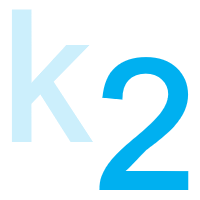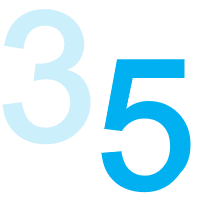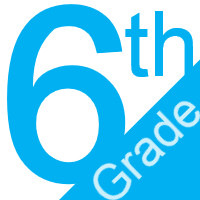6th Grade English
 Standards Glossaries
Standards Glossaries
| K Grade English | 1st Grade English | 2nd Grade English |
 Standards Glossaries
Standards Glossaries
| 3rd Grade English | 4th Grade English | 5th Grade English |
 Standards Glossaries
Standards Glossaries
| 6th Grade English | 7th Grade English | 8th Grade English |
 Standards Glossaries
Standards Glossaries
| 9th Grade English | 10th Grade English | 11th Grade English | 12th Grade English |
 Standards Glossaries
Standards Glossaries
| HS Journalism | HS Speech |
| All categories |
PRIORITIZED BENCHMARKS |
|---|
ELA-06.RL.02
ELA-06.RL.02 Determine a theme or central idea of text (e.g. Literature/Fiction) and explain how it is conveyed through particular details.Student Learning Targets:Knowledge Targets
Reasoning Targets
Skills (Performance) Targets
Proficiency ScaleThe student can ...1 Beginning... with help, demonstrates a partial understanding of some of the simpler details and processes (Score 2.0 content) and some of the more complex ideas and processes (Score 3.0 content).Start 2 Developing... demonstrates no major errors or omissions regarding the simpler details and processes but exhibits major errors or omissions regarding the more complex ideas and processes (Score 3.0 content).Simple 3 Proficient“The Standard.”... demonstrates no major errors or omissions regarding any of the information and processes that were end of instruction expectations. Target 4 Advanced... demonstrates in-depth inferences and applications regarding more complex material that go beyond end of instruction expectations.Complex Proficiency Scale
ResourcesVocabulary
Websites
| |||||||||||||||||||||||||||||||||||||||
ELA-06.RL.03
ELA-06.RL.03 Describe how a particular story’s or drama’s plot unfolds as well as how the characters respond or change as the plot moves toward a resolution.Student Learning Targets:Knowledge Targets
Reasoning Targets
Skills (Performance) Targets
Proficiency ScaleThe student can ...1 Beginning... with help, demonstrates a partial understanding of some of the simpler details and processes (Score 2.0 content) and some of the more complex ideas and processes (Score 3.0 content).Start 2 Developing... demonstrates no major errors or omissions regarding the simpler details and processes but exhibits major errors or omissions regarding the more complex ideas and processes (Score 3.0 content).Simple 3 Proficient“The Standard.”... demonstrates no major errors or omissions regarding any of the information and processes that were end of instruction expectations. Target 4 Advanced... demonstrates in-depth inferences and applications regarding more complex material that go beyond end of instruction expectations.Complex Proficiency Scale
ResourcesVocabulary
Websites
| |||||||||||||||||||||||||||||||||||||||
ELA-06.RL.06
Student Learning Targets for Grade 6 Reading:Knowledge Targets
Reasoning Targets
Proficiency Scale
ResourcesWebsites Vocabulary | ||||||||||||||||||||||||||||||||||||||||
ELA-06.RL.10
Student Learning Targets for Grade 6 Reading:Skills (Performance) Targets
Proficiency Scale
ResourcesWebsites Vocabulary | ||||||||||||||||||||||||||||||||||||||||
ELA-06.SL
Narrative for (SL) Speaking and ListeningAn important focus of the speaking and listening standards is academic discussion in one-on-one, small-group, and whole-class settings. Formal presentations are one important way such communication occurs, but so is the more informal discussion that takes place as students collaborate to ask and answer questions, build understanding, and solve problems. These standards require that students gain, evaluate and present information, ideas, and evidence through listening and speaking as well as through incorporating media. Regardless of the speaking and listening setting, students are expected to use appropriate eye contact, adequate volume, and clear pronunciation. The standards within this speaking and listening strand are closely linked with the other strands of reading, writing, and language as they discuss literature and informational texts and as they work through the writing process. Calculation Method for StrandsStrands are larger groups of related standards. The Strand Grade is a calculation of all the related standards. Click on the standard name below each strand to access the learning targets and proficiency scales for each strand's related standards. | |
ELA-06.SL.01
Student Learning Targets Grade 6 Reading:Reasoning Targets
Skills (Performance) Targets
Product Targets
Rubric for 6th Grade Reading:Click here for the 6th grade Reading rubric for SL.6.1 Student Learning Targets Grade 6 English:Skills (Performance) Targets
Proficiency Scale for 6th Grade English:
ResourcesWebsites Vocabulary: Reflect Inquire Paraphrasing Deadlines Roles Discussion
| ||||||||||||||||||||||||||||||||||||||||
ELA-06.W
Narrative for (W) WritingStudents in grade 6 are increasingly challenged to sharpen their ability to write and speak with more clarity and coherence, providing clear reasons and relevant evidence to support their conclusions. While the writing standards specify that students will focus on narrative, explanatory, and argumentative writing, 6th grade students will also discover how to answer questions through writing and research. In all of these writing opportunities, students aim toward organizing and developing their ideas with specific evidence and writing in such a way that transitions, word choice, and sentence structure all contribute to readability and meaning. Throughout the writing process, students will also learn how to prewrite, revise and edit to make their writing stronger. These writing standards are strongly linked to a student’s understanding of literature and informational text as well as to their language standards. Calculation Method for StrandsStrands are larger groups of related standards. The Strand Grade is a calculation of all the related standards. Click on the standard name below each strand to access the learning targets and proficiency scales for each strand's related standards. | |
ELA-06.W.01
Student Learning Targets for 6th Grade English:Knowledge Targets
Reasoning Targets
Skills (Performance) Targets
Product Targets
Proficiency Scale
ResourcesWebsites www.internet4classrooms.com (29) Vocabulary claim reasons credible sources relevant evidence counterclaim introduction conclusion | ||||||||||||||||||||||||||||||||||||||||
ELA-06.W.02
Student Learning Targets for Grade 6 English:Knowledge Targets
Reasoning Targets
Skills (Performance) Targets
Product Targets
Proficiency Scale
ResourcesWebsites www.internet4classrooms (5, 6, 14) www.noodletools.com Vocabulary informative explanatory introduction conclusion develop topic relevant facts concrete details examples quotations definition classification comparison/contrast cause/effect graphics headings | ||||||||||||||||||||||||||||||||||||||||
ELA-06.W.03
Student Learning Targets for Grade 6 English:Knowledge Targets
Reasoning Targets
Skills (Performance) Targets
Product Targets
Proficiency Scale
ResourcesWebsites www.internet4classrooms (24) Vocabulary introduction conclusion characters narrator dialogue pacing description events transitions event sequence | ||||||||||||||||||||||||||||||||||||||||
ELA-06.W.04
Student Learning Targets for Grade 6 Reading:Knowledge Targets
Reasoning Targets
Skills (Performance) Targets
Product Targets
Proficiency Scale for Grade 6 Reading
ResourcesWebsites Vocabulary | ||||||||||||||||||||||||||||||||||||||||


 Strand (SL)
Strand (SL) Strand (W)
Strand (W)